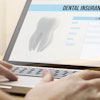Dental practices that don't adopt new technologies are increasingly at a disadvantage. By 2025, cloud technology will no longer be a luxury -- it will be essential for running an efficient, secure practice. If your practice hasn't made the switch yet, now is the time.
 Dr. Lior Tamir.
Dr. Lior Tamir.
Cloud-based systems have the power to transform how you operate, improve patient care, and safeguard your data in ways traditional methods cannot.
Here's why 2025 should be the year you move to the cloud.
The drawbacks of outdated systems
Let's start with the major limitations of sticking with legacy systems. While local servers and manual data entry may have worked for you in the past, they're now holding your practice back in some significant ways.
Inefficiency and inaccuracy
Managing patient records, billing, and appointments on local servers -- or worse, using paper -- creates inefficiencies that waste time and increase the risk of errors. A small mistake in scheduling or billing could disrupt your day, frustrate patients, and even hurt your bottom line. Cloud-based systems integrate all of these functions, offering a single, streamlined platform that minimizes errors and boosts your team's productivity.
Accessibility limitations
When your data are tied to a local server, you're restricted to managing your practice from one physical location. If you need to access patient records or scheduling data from home or while traveling, it becomes a headache.
Cloud platforms give you access to everything you need, from patient files to schedules, no matter where you are. This flexibility is especially important as teledentistry becomes more widespread.
Security risks
Many practices think that sticking with local servers is safer, but the reality is the opposite. Local servers are vulnerable to data breaches, ransomware attacks, and hardware failures. Cloud providers, on the other hand, employ advanced encryption, regular monitoring, and automated updates to keep your data safe. Studies show that practices using cloud solutions see a 40% reduction in security incidents compared to those using on-premises systems.
The cloud advantage: Why your practice needs it
Switching to cloud-based systems isn't solely about fixing what's broken. It's about unlocking new opportunities for growth and improving every aspect of your practice.
Increased efficiency and cost savings
Moving to the cloud eliminates the need for expensive hardware, server maintenance, and information technology support. Practices that switch to the cloud report up to 30% savings on operational costs. With automated updates, you no longer have to worry about costly software upgrades or ongoing IT interventions. Cloud platforms are designed to scale with your practice, whether you’re a single-office setup or managing multiple locations.
Real-time collaboration and diagnostics
Collaboration between your practice and external labs or specialists becomes instantaneous with cloud tools. Sharing digital impressions, x-rays, or treatment plans is seamless, leading to faster turnaround times and better patient outcomes. For example, the cloud-native Primescan 2 intraoral scanner allows real-time sharing of imaging with specialists, significantly reducing coordination times and improving patient care.
Remote access and teledentistry
The COVID-19 pandemic showed that telemedicine isn't just a convenient option -- it's necessary. Cloud platforms enable teledentistry, allowing you to consult patients remotely in a secure, compliant manner. This capability keeps your practice flexible while opening new revenue streams. Post-pandemic data show that practices adopting teledentistry saw patient retention rates increase by up to 15%.
Artificial intelligence-powered diagnostics
Artificial intelligence (AI) is no longer the future -- it's the present. Integrated AI systems in cloud platforms can analyze patient data, assisting with diagnosis and helping detect conditions like cavities or gum disease earlier and with more precision. By 2025, AI tools will be even more sophisticated, offering proactive, personalized care with minimal effort.
The future is here: Why waiting is risky
Still on the fence about moving to the cloud? Consider this: By 2025, staying off the cloud can not only make your practice inefficient, it may make it obsolete. The dental industry is rapidly evolving, and patients expect their healthcare providers to stay ahead of the curve. Practices using outdated systems risk falling behind competitors who have embraced cloud technology.
Furthermore, stricter government regulations on data security and patient privacy are making it harder to justify outdated systems. Cloud platforms are designed to handle these stringent requirements, while local servers often lack the infrastructure to keep up. Failing to comply with new standards could lead to costly fines and reputational damage.
Ready to take the leap?
By 2025, cloud technology will be the foundation of every successful, modern dental practice. It offers better security, improved patient care, and more operational flexibility, all while reducing costs and headaches. The technology is ready and so is the industry. The question is, are you?
Making the switch now can ensure that your practice is ready for the future of dentistry, one where secure, efficient, patient-centered care is the standard. The cloud isn't just the next step, it's the best step.
Editor's note: References available upon request.
The comments and observations expressed herein do not necessarily reflect the opinions of DrBicuspid.com, nor should they be construed as an endorsement or admonishment of any particular idea, vendor, or organization.
Dr. Lior Tamir is a practicing dentist, entrepreneur, and digital strategist. Tamir has founded and led multiple startups that have leveraged data, AI, and design thinking.



















